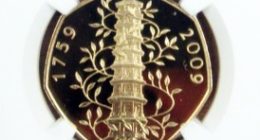A MYSTERIOUS star looked as if it had just completely vanished out of space, but new research may have an answer to what happened.
The star known as N6946-BH1 had scientists stumped since 2009 as it went through a period of brightening like it would for a supernova but then disappeared from sight with the technology available at the time.
N6946-BH1 is 25 times larger than the Sun.
However, scientists have been able to observe new data using Nasa’s James Webb Space Telescope and MIRI instruments.
A study published September 28 on arXiv analyzed the new data and has come up with new a suggestion as to what may have occurred.
Before the new data, scientists suggested that it may have collapsed into a black hole or that it was a failed supernova.
READ MORE on Space
The BH-1 was added to its name because of the black hole theory.
NEW DATA
The new data shows that there are three bright sources where the star was located.
The scientists now believe that N6946-BH1’s indescribable events were caused by a star merger.
They explained that what appeared to be a bright star about to go into a supernova in 2009 was actually a star system that brightened when two stars came together.
Most read in News Tech
After the stars came together, they would have faded back to normal – explaining why it “disappeared.”
Although the data has revealed new information, scientists can still not provide an exact explanation for what had occurred to N6946-BH1.
JAMES WEBB SPACE TELESCOPE
The James Webb Space Telescope is an astonishing new piece of tech and has allowed scientists to do and see things in space that they have never been able to before.
It allowed scientists to see N6946-BH1 which is in a galaxy that is 22million light-years away.
The telescope can also catch some pretty incredible images in space with its infrared imaging.
New images from the telescope show a young star spewing colorful supersonic gas.
The colors form “when stellar winds or jets of gas spewing from these newborn stars form shock waves colliding with nearby gas and dust at high speeds,” Nasa explained.











